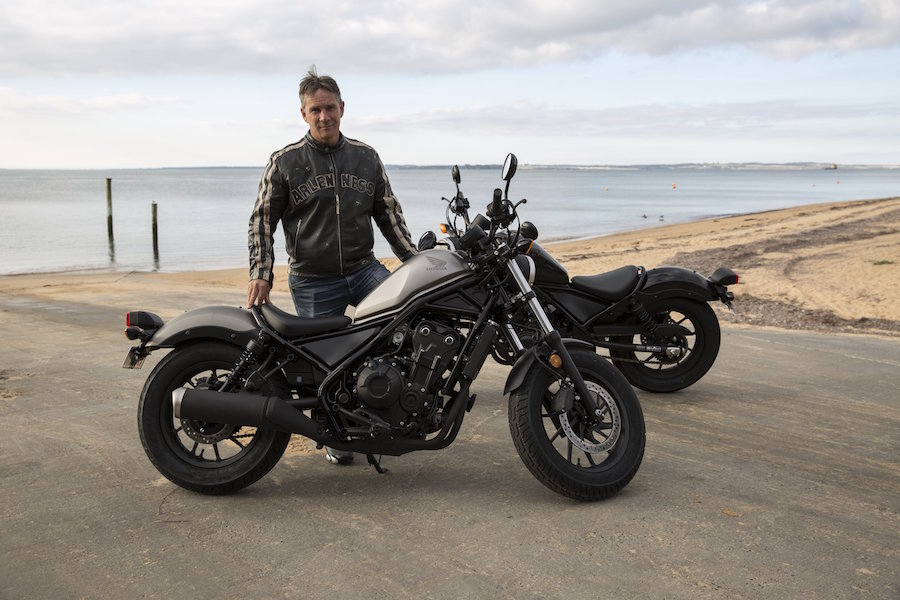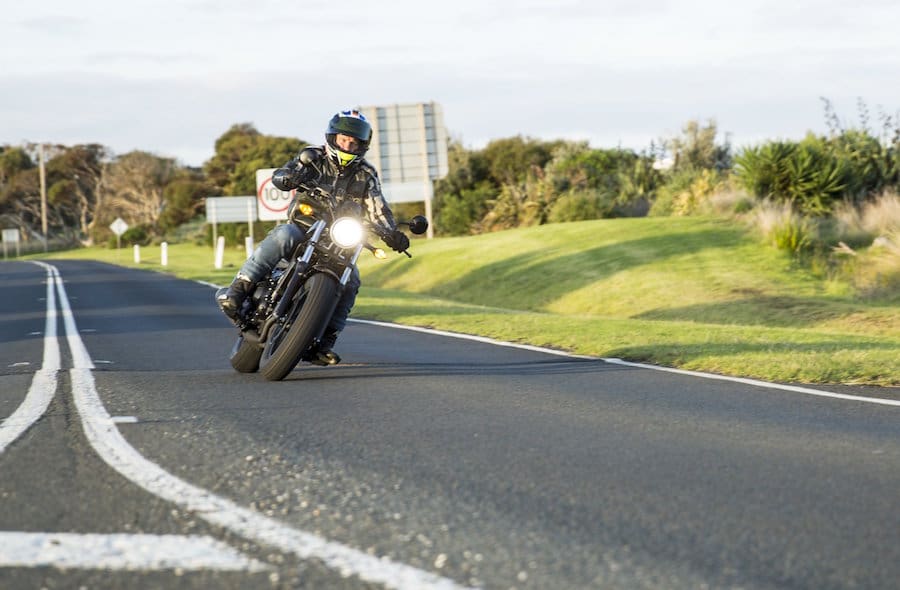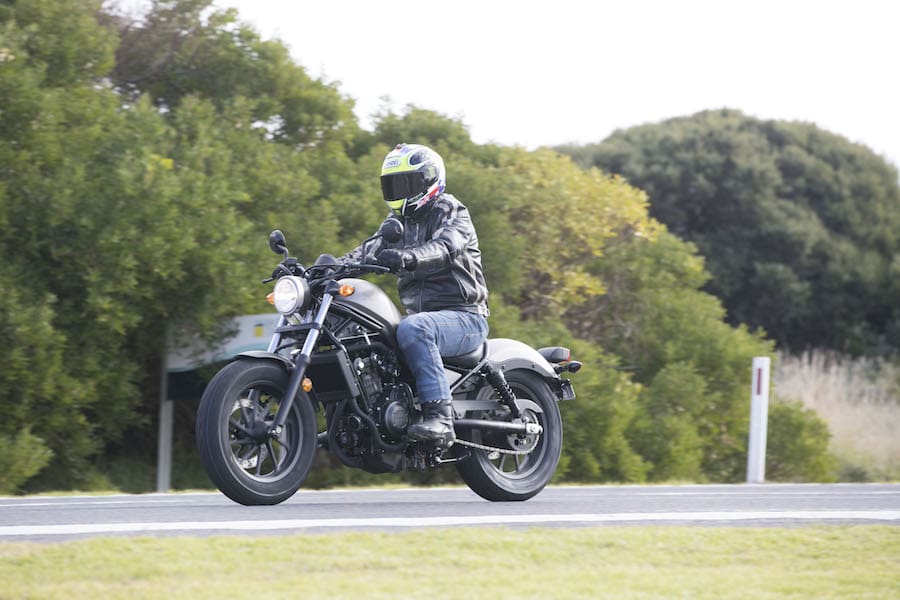When I was growing up everybody rode a bike. The 1970s and 80s was a carefree and easy period etched in my mind as one of the best.
Holden and Ford were pumping out thousands of new, more powerful cars every year, no one cared about fuel consumption, the Japanese had just invented the four-cylinder sportsbike and motorcycling was a mainstream sport. In those times 99 per cent of people wanted the latest and greatest Japanese missile and it was only a hard-core few that rode Harley-Davidsons or ‘bobbed’ Triumphs on the streets.
In fact, as I recall, it was a pretty rare occurrence to see a chopper without the rider wearing some type of colours. I grew up in Adelaide and still remember regularly seeing the Hells Angels cruising the streets, unbothered and riding from wherever they’d been to wherever they were going.
Shoot forward a few decades and life has pretty much turned on its head. Cars are getting slower and more fuel efficient, sportsbikes seem to be a thinning breed, and not everyone bases their choice of bike on who is winning the Australian Superbike Championship.
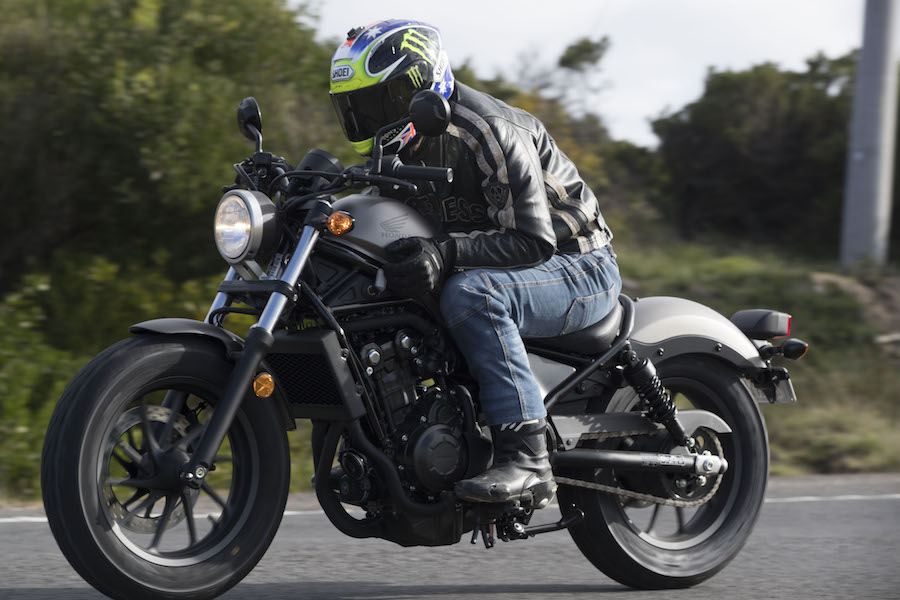
These changes over the decades have seen a shift in the way that the factories manufacture and develop bikes. The once hot and sporty 250cc two-stroke learner bikes are a thing of the past, and machines like the CMX are becoming a more popular choice. The chopper/bobber scene is so mainstream now that even Harley-Davidson has seen the light and created its own LAMS model, the Street 500, to up its yearly sales numbers and entice newbies over to the iconic brand.
Honda was one of the first companies to dabble in the custom chopper sector when bikes like the CB1000 custom hit the market way back in 1983. And before that the Honda 750 fours were almost the bike of choice to chop. The big Japanese maker has maintained a strong presence since then, and this year it has a new entry-level cruiser: the CMX. It’s a mixture of new and old, which is a good thing.
Although it’s based on a well-established 500cc engine, aesthetically its all new, with its 16-inch front and rear wheels giving the appearance of a proper custom bike. The guards are steel and robust which is another positive attribute, especially if you want to start your own modifications down the track.
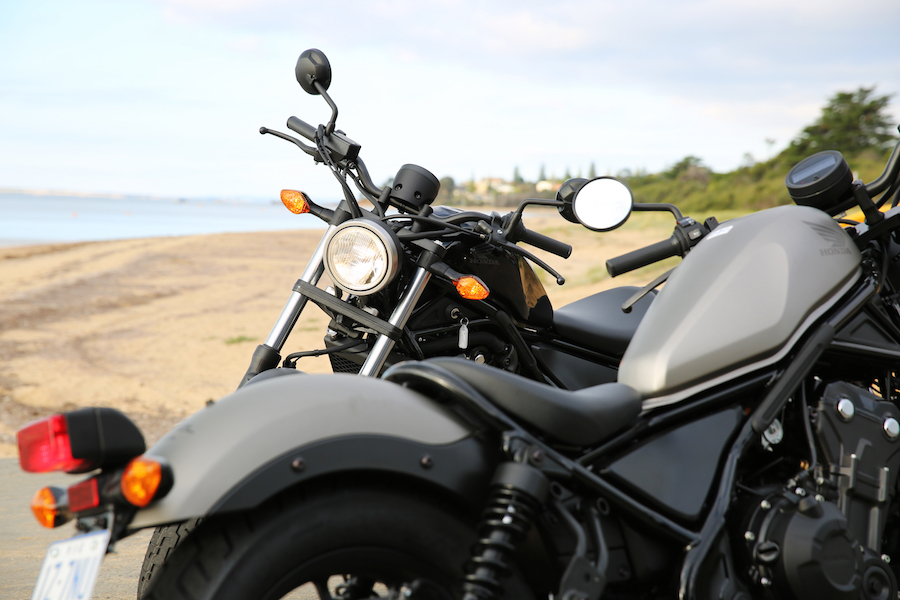
The 11.2 litre tank is new and slopes upward toward the very widely set top clamps to give the CMX that chopper feel. So does the longer front fork. The dash and surrounds are uncluttered, with an easy reach to the ’bars that look fatter than usual, and have a good feel when you start cruising along.
There’s a LCD speedo neatly displayed within a stylish round clock, keeping that minimalist look alive while still providing the information that we expect these days.
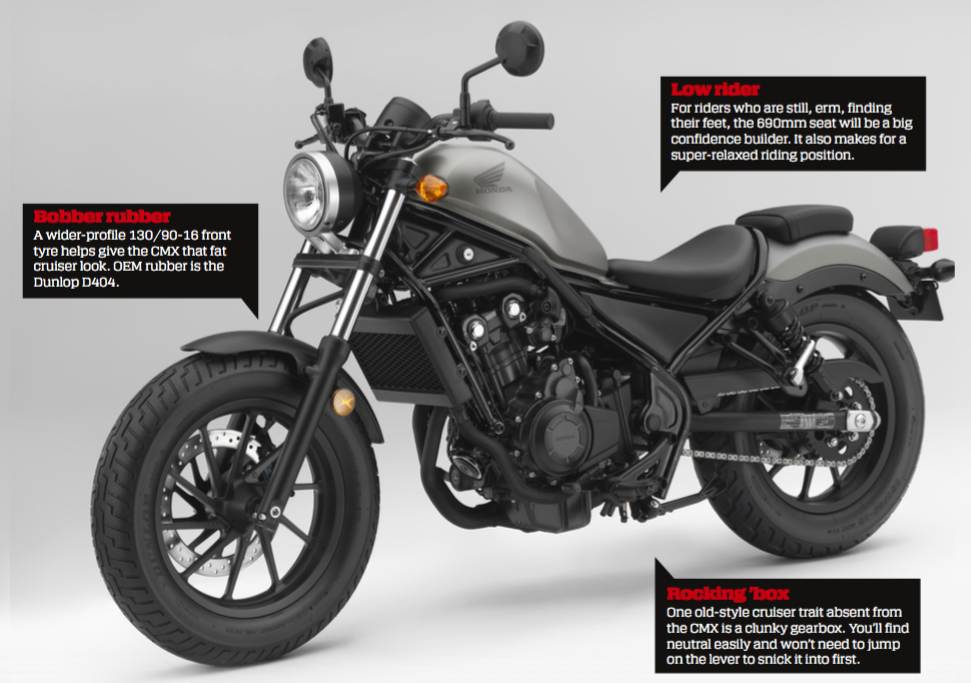
One thing that’s a little different on the CMX is the location of the ignition key. To preserve that clean look, Project Leader Mr Keita Mikura chose to put it on the frame, just below the handlebars. It was slightly tricky to find initially, but I quickly got used to it.
The pipe, which is also specifically designed for the bike, exits on the right-hand side and fits in well with the clean look of the machine but would probably be one of the first things to be chopped or changed by the diehards among us.
The chassis is new and has a low-slung look which is designed to keep it narrow around the rider’s legs, and that attribute matched to its 690mm seat height means the CMX will appeal to new and shorter riders. It’s unbelievably easy to get your feet on the ground and balance the claimed 187.8kg kerb weight of the bike – it almost feels like you have a pushbike between your legs rather than a motorcycle.

At the heart of the CMX is a variant of the venerable 500cc parallel twin that powers Honda’s range of CB500 models. It’s an engine that has seen service for many years and its reliability is second to none – see the breakout if you have any doubts! It’s been mapped differently, however, to make it less rev happy and more user friendly. The compact dimensions give the CMX a slender profile that perfectly matches Mr Mikura’s design brief – to make a raw and simple bike that is attractive if left stock, or a perfect blank canvas if the owner wants to get inventive. One big difference from the good ol’ days is that the electronics, frame and hard parts of this bike are bullet-proof, meaning you can probably ride it every day for the rest of your life without any major problems.
Our time with the CMX consisted of an afternoon spent flicking around Victoria’s Phillip Island. No, not the racetrack, but the back roads, and a trip down to Kilcunda and back. It confirmed that the bike is everything a learner legal bike needs to be: light and nimble with a power delivery that is honest and steady. It’s no racehorse, but rather moves from a trot to a gallop smoothly, and this in turn makes it easy to judge the amount of grip on the road below and helps avoid nasty surprises. Starting and stopping is so easy too, partly due to the seat height but also an easy and gradual clutch action.
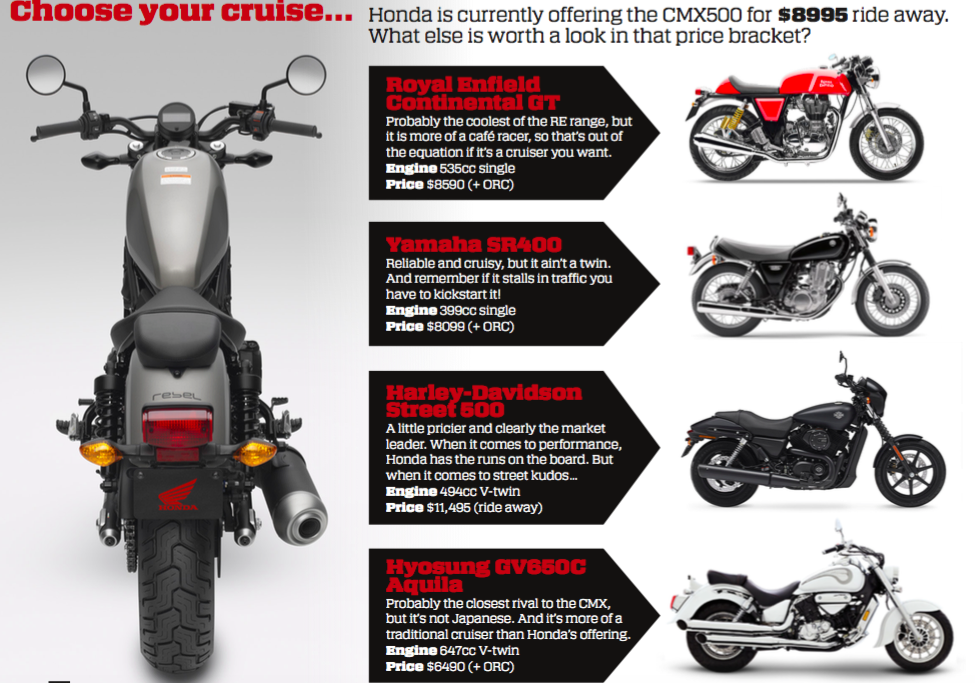
The suspension works well on the front, absorbing the bumps at the speeds this bike was designed for with ease. You can adjust the preload on the rear shock as well, if for example you’re carrying a passenger. Obviously, on a bike like this, the emphasis is on comfort, so the standard setting is on the soft side.
Even though the CMX is raked out and has a lot of trail in the front end, it still corners well. We were mucking about on some twisty sections within sight of Seal Rocks when I really started to understand what this bike is all about though. Normally when I see corners I feel an irresistible urge to go fast, but the fabulous feel of this bike let me relax and just enjoy the basics about riding. Suddenly I was taking in the scenery, and didn’t have a worry in the world. I didn’t go ballistic or try and scrape the handlebars or do wheelies and skids, that’s not what this bike is about. What it does do well is keep a good balance of Yin and Yang, and if that equals inner happiness, the CMX succeeds.
With ABS, three different colours and a raft of accessories, LAMS riders have never had it so good. The old unreliable chopper may have gone, but luckily for the modern rider it’s been replaced with these new refined cruisers. Not all motorcycles are built like this and I reckon Mr Keita Mikura will be getting a pat on the back in Japan. He has succeeded in his quest with the CMX, of making a bike with less, deliver more.
By Steve Martin
